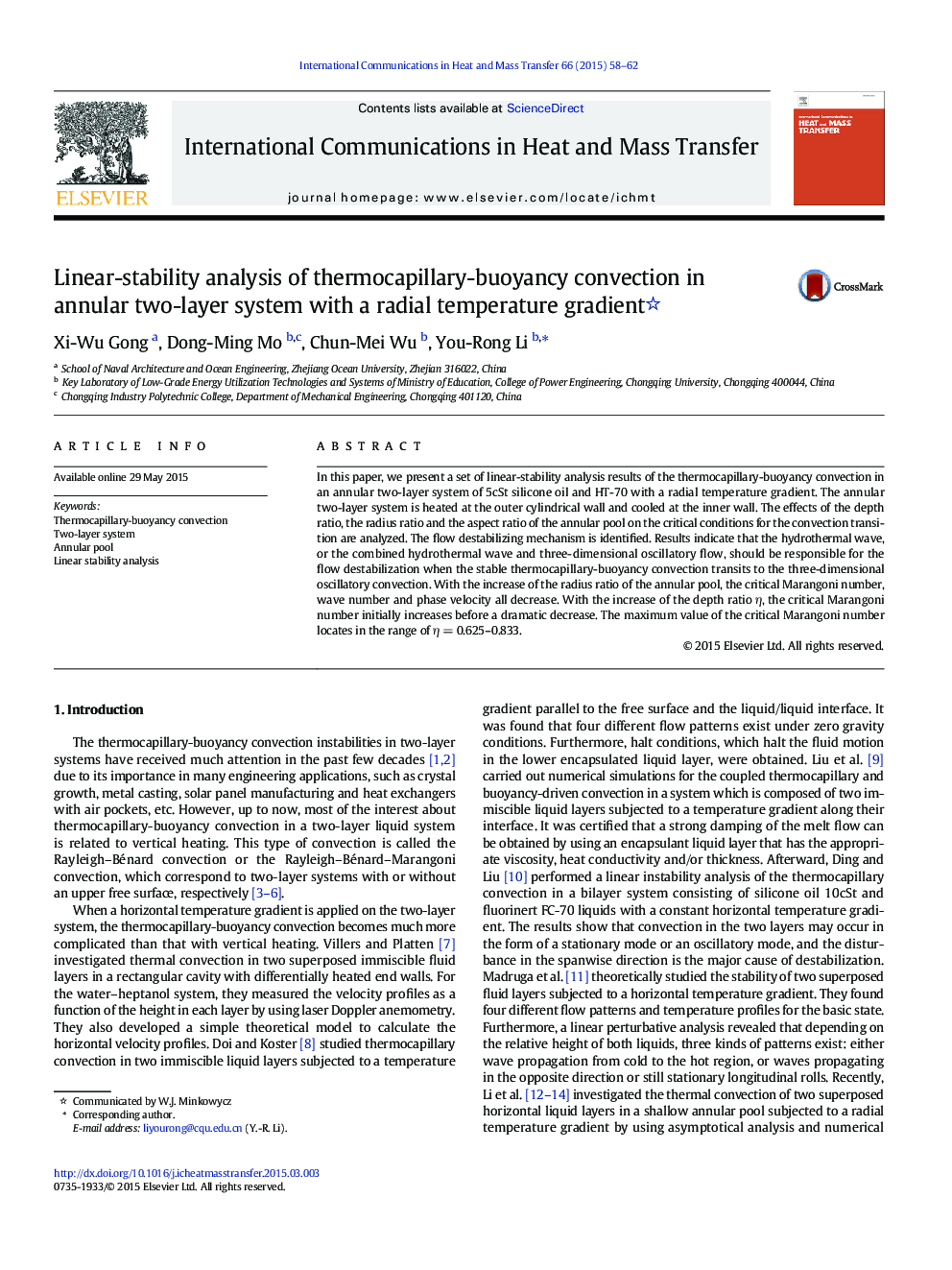| Article ID | Journal | Published Year | Pages | File Type |
|---|---|---|---|---|
| 653123 | International Communications in Heat and Mass Transfer | 2015 | 5 Pages |
In this paper, we present a set of linear-stability analysis results of the thermocapillary-buoyancy convection in an annular two-layer system of 5cSt silicone oil and HT-70 with a radial temperature gradient. The annular two-layer system is heated at the outer cylindrical wall and cooled at the inner wall. The effects of the depth ratio, the radius ratio and the aspect ratio of the annular pool on the critical conditions for the convection transition are analyzed. The flow destabilizing mechanism is identified. Results indicate that the hydrothermal wave, or the combined hydrothermal wave and three-dimensional oscillatory flow, should be responsible for the flow destabilization when the stable thermocapillary-buoyancy convection transits to the three-dimensional oscillatory convection. With the increase of the radius ratio of the annular pool, the critical Marangoni number, wave number and phase velocity all decrease. With the increase of the depth ratio η, the critical Marangoni number initially increases before a dramatic decrease. The maximum value of the critical Marangoni number locates in the range of η = 0.625–0.833.
